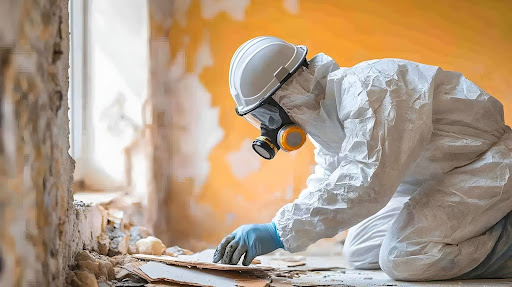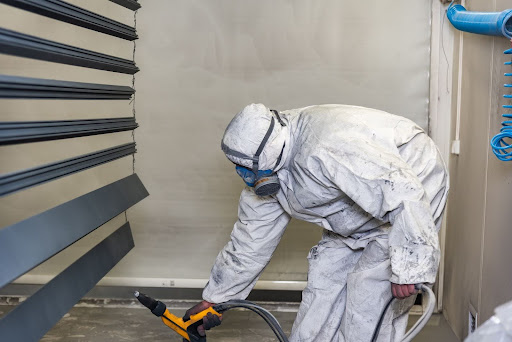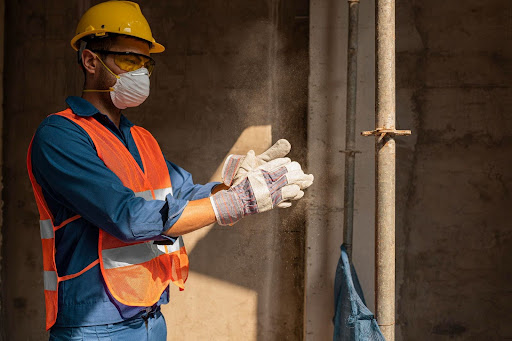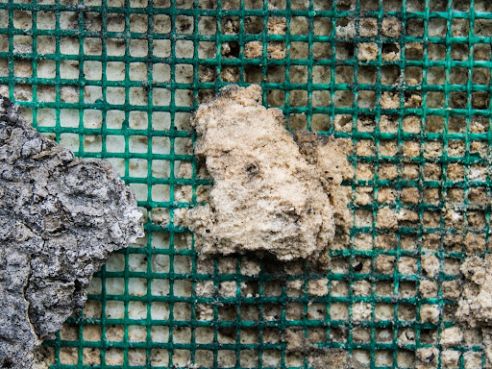Asbestos is a naturally occurring mineral that has been used for centuries due to its fire-resistant and insulating properties. However, many people still question, “Is asbestos flammable?” This question is especially important for those working in older buildings or industries where asbestos was heavily used.
In this blog, we’ll examine whether asbestos is truly flammable, explore its fire-resistant qualities, and highlight the associated risks to ensure safety and compliance with current regulations.
Understanding Asbestos: Types, Properties, and Common Uses
Asbestos refers to a group of naturally occurring minerals made up of thin, fibrous crystals. There are six primary types of asbestos, with three of the most commonly encountered being:
- Chrysotile (White Asbestos): The most commonly used form found in roofing materials, cement products, and insulation.
- Amosite (Brown Asbestos): Often used in insulation, cement products, and tiles.
- Crocidolite (Blue Asbestos): Known for its use in pipe insulation and some cement products.
Asbestos is known for its heat-resistant qualities, which is why it was commonly used in building materials, automotive parts, and fireproof clothing. However, this material also poses serious health risks if disturbed, leading to conditions like asbestosis, lung cancer, and mesothelioma.
Is Asbestos Flammable? The Science Behind Its Fire Resistance

The short answer is: No, asbestos is not flammable. Asbestos is one of the most heat-resistant materials available and is widely known for its ability to withstand extremely high temperatures. In fact, asbestos can endure temperatures up to 1,000°F (537°C) without degrading.
This heat resistance is why asbestos was so popular for use in insulation, building materials, automotive components, and fireproofing applications. Asbestos fibers themselves are chemically inert, which means they don’t burn easily and don’t contribute to the spread of flames.
However, this doesn’t mean asbestos is completely invulnerable. Under extreme conditions, such as exposure to very high temperatures or a fire, asbestos-containing materials (ACMs) can degrade. While the fibers themselves may not catch fire, the material they are embedded in can break down, potentially releasing harmful asbestos particles into the air.
Also Read: How Much Does It Cost to Remove Asbestos? A 2025 Guide
Fire Resistance and Asbestos: Is It Really Safe?

Although asbestos is fire-resistant, it is important to understand that being fireproof does not equate to being safe. When asbestos-containing materials are exposed to fire, they can break apart or be disturbed, releasing tiny fibers into the air. These fibers can then be inhaled and pose a significant health risk to anyone in the vicinity.
In older buildings, asbestos-containing products such as insulation, roofing materials, and floor tiles may still be present. Over time, these materials may become brittle, making them more likely to release dangerous fibers, even in the absence of a fire. The health risks associated with asbestos exposure are well-documented, and there are strict regulations in place to minimize these risks.
Asbestos and Fire Safety: What You Need to Know

While asbestos may not burn easily, it does not mean it is risk-free. In fact, exposure to asbestos fibers can result in serious health problems, especially when these fibers are disturbed by renovations, fires, or physical damage. Asbestos exposure has been linked to the development of respiratory diseases, including:
- Asbestosis: A chronic lung condition caused by inhaling asbestos fibers.
- Lung Cancer: A form of cancer that can develop from prolonged exposure to asbestos.
- Mesothelioma: A rare and aggressive form of cancer that affects the lining of the lungs and other organs.
For this reason, any asbestos-containing materials in your home or workplace should be handled with extreme caution. If asbestos becomes damaged or disturbed, it’s crucial to call in professionals who are trained in proper asbestos removal and handling.
Frequently Asked Questions About Asbestos and Fire Safety
1. Does asbestos burn in a fire?
No, asbestos is not flammable. It is highly resistant to fire and heat, making it effective in fireproofing materials. However, if exposed to extreme heat, asbestos materials can break down and release harmful fibers.
2. Is asbestos safe in old buildings?
No. While asbestos may be intact in old buildings, it can become hazardous if disturbed. Asbestos-containing materials should be professionally inspected and removed if needed to minimize exposure risks.
3. Can asbestos exposure lead to fire-related health risks?
Although asbestos itself is not flammable, exposure to airborne asbestos fibers—whether in a fire or renovation—can lead to serious health issues like lung cancer and asbestosis.
4. How should asbestos be handled in a building or workplace?
If you suspect your property contains asbestos, avoid disturbing it. Hire licensed professionals to assess, manage, and, if necessary, remove asbestos-containing materials in compliance with OSHA and EPA guidelines.
Fire Resistance vs. Health Risks: The True Dangers of Asbestos
Asbestos was once heralded for its fire-resistant properties, but it is now more commonly associated with health risks and regulatory challenges. While the material itself is not flammable, its fibers are incredibly hazardous when inhaled, and they can remain suspended in the air for long periods.
It’s important to note that fire resistance doesn’t negate the health dangers posed by asbestos. Asbestos-related diseases often take decades to manifest, making early detection and prevention essential. Regular inspections, proper maintenance, and professional asbestos abatement are the best ways to ensure safety.
Understanding the Risks of Asbestos in Modern Safety Planning
In conclusion, while asbestos is not flammable and is resistant to heat, it remains a dangerous material due to the health risks posed by inhaling its fibers. Proper handling, regular inspections, and compliance with safety regulations are crucial to mitigating the risks associated with asbestos exposure.
For businesses and property owners, it’s essential to ensure that any asbestos-containing materials are identified and safely managed by licensed professionals. Understanding the potential hazards of asbestos will help protect workers and building occupants from long-term health issues.
If you are unsure whether your property contains asbestos, don’t take chances—contact an expert to evaluate the situation. Ensuring compliance with safety standards will help reduce risks and keep everyone safe.



